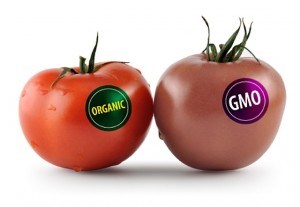Vatic Note: THIS IS A MUST READ. GMO's are way worse than we ever thought. The impact on children is dramatic. You will see below in this presentation, the dramatic change in children born with Autism. Its literally criminal. I want you to keep this article in mind when you read the next one, which is about how Hillary Clinton is kissing up to Monsanto and their GMO seeds. Its politics for her, and life or death or loss of health for us. Keep that in mind. No way, should this woman "EVER" be President of these United States. She should be in prison for all the crimes she has committed upon the people of this nation, including loyalty to a foreign nation that has conducted war against the people of these United States.
This was another incredible article with massive amounts of information, that when read confirms our serious need to rid this nation of these GMO crops. Its not only harming us directly, but indirectly, its harming every living thing, through our water, soil, and air. That means animals as well, and we eat those on top of the produce we eat. Think on it a bit. It also was made to increase the wellbeing of the enemies of farming and feed growing, such as weeds, boll weevils and other crop eating/destroying insects.
No wonder the PTB shut down our farming and shipped our produce to South America to be grown and then shipped back. We did a post on the elections in Brazil and tried to warn the Brazilian people, but alas, they elected the elites chosen khazars who were communists and I knew then that South America was gone. So now our produce comes from South America where regulation on the food grown is virtually non existant. Who knows what we are eating these days. If its not marked
"Non-GMO certified", then I don't eat it.
Pesticides are pervasive as they are everywhere and animals, like humans, need their survival intakes need to be pure and healthy. With GMO, its like us committing suicide by pesticides. The powers that be are using GMO food like they would a nuke, to get rid of us. Remember, depopulation is the name of the game. They cannot rest in peace with their satanic NWO if we are not gone or zombied down.
These GMO seeds resulting in poisoned food, will do it and generate income for the drug companies from all the associated illnesses that will come. Now, when someone knows that something will seriously make you ill or kill you and they intentionally put it into your food with the intent to do harm, then you have a first degree felony assault or murder here and that is a very serious crime, with serious penalties.
We also now are certain that our criminal justice system is no longer working, not only in the United States, but in every major, or western population centers, which means then, that we are on our own. Our justice will have to come from us, done by us. Its something to begin thinking about very seriously, since we are at war and we best start acting like it. Otherwise, they win. No wonder they felt they had to collect our guns. They were right.
They say below, "there is something wrong with the state of science"..... Yes, indeed there is, and we
posted a blog about that back several years ago, and it was called "The Brotherhood of the Bell: Black Arts and Black Sciences". We were calling out a warning of the war going on to harm us back before 2011 and here it is today right in our faces. Wait until you see why Monsanto ( Gates ) contracted with and then bought Blackwater. They are using them like Mercenaries against those activists and scientists who speak out again the GMO seeds. This is unprecedented and fascism has clearly and irretrievably taken control of our nation and soon, the entire world, UNLESS WE, THE PEOPLE, OF THE GLOBE STOP IT.
We Are What We Eat – The poisoning of our food supply
http://farmwars.info/?p=13098#more-13098
Rosemary Mason MB ChB FRCA, Farm Wars,
Compiled with information from a global network of beekeepers, independent scientists and environmentalists
Farm Wars
We Are What We Eat – The poisoning of our food supply
“We now live in a world where it is considered beneficial and necessary to spray poison over all our food and to add more poison (dye, preservatives, flavor enhancers, etc) in processing our food. Then we take more poison to counteract the poisons. Beam me up Scotty, the inmates are insane.”
Dr Nancy Swanson; on the history of how corporations have successfully changed the laws in the US to poison our food (03/04/2014):
“The world of systemic insecticides is a weird world, surpassing the imaginings of the brothers Grimm. It is a world where the enchanted forest of the fairy tales has become a poisonous forest. It is a world where a flea bites a dog and dies…where a bee may carry poisonous nectar back to its hive and presently produce poisonous honey.”
Rachel Carson on systemic insecticides in “Silent Spring”: 27/09/1962
“I listened and heard nothing, no bird, no click of insect. There were no bees. The air, the ground, seemed vacant…It felt like another planet entirely.”
“Yet, 100 years ago, these same fields, these prairies, were home to 300 species of plants, 60 mammals, 300 birds, hundreds and hundreds of insects. This soil was the richest, the loamiest in the state. And now, in these patches, there is almost literally nothing but one kind of living thing. We’ve erased everything else. There’s something strange about a farm that intentionally creates a biological desert to produce food for one species: us. It’s efficient, yes. But it’s so efficient that the ants are missing, the bees are missing, and even the birds stay away. Something’s not right here. Our cornfields are too quiet. Adapted from the words of Craig Child and Robert Krulwich about a 600 acre farm in Ohio growing GMO corn: 29/11/2012
Three different patents have been filed and granted for glyphosate:
- As a chelator of heavy metals and a wetting agent in 1961(1) [US3160632]
- As a herbicide in 1968(2) [US3455675]
- As an antibiotic in 2002(3) [US7771736]
- As an anti-protozoal agent in 2003(4) [US7771736]
Independent research shows that glyphosate,(5) (together with atrazine(6)) are endocrine disruptors, yet an assessment of the State of Science of Endocrine Disruptors was prepared for the United Nations Environment Program and the World Health Organization by a group of approximately 50 expert scientists. This eminent body failed to reach a conclusion on atrazine, and did not even consider glyphosate, the most widely used herbicide in the world.(7) There is something wrong with the State of Science.
Chelation of metals The Sri Lankan Government has recently banned glyphosate because researchers showed that the epidemic of kidney disease in rice paddy fields which started in 1994 was due to glyphosate being used in geological areas with heavy metals and hard water. “Glyphosate acts as a carrier or a vector of these heavy metals to the kidney,” said Dr Jayasumana, the study’s principal author.(8) You can read an interview with the author(9) to find out how he proved the link between the world’s number one selling herbicide known as Roundup® (Glyphosate) and a series of mysterious epidemics of fatal chronic kidney disease of unknown origin (CKDu) affecting several poor farming regions around the world. Eleven countries on three continents are affected by CKDu.
This includes sugar cane workers in Central America and Louisiana where glyphosate, sprayed by air 6 weeks before harvest, is used to ripen the sugar cane.(10) The aerial spraying of glyphosate could also explain the mass extinction of amphibians across Central America from chytrid fungus.(11)
Asked to explain the lack of concern by authorities he said “This is not a disease of the Western World; hence, a low visibility in print and electronic media.” But he is wrong. Chronic kidney disease is an increasing problem in the Western world and glyphosate may be playing a rôle in this epidemic. In a Review article by Samsel & Seneff: Glyphosate, pathways to modern diseases II: Celiac Sprue and Gluten Intolerance,(12) the plot of deaths due to end-stage renal disease in the US aligned with glyphosate usage rates on corn and soy shows strong correlation.
In the UK, the incidence of sudden loss of kidney function has increased dramatically. On 28/08/2013 the National Institute for Health and Care Excellence (Nice) said that acute kidney injury (AKI) costs the NHS between £434m and £620m a year – more than it spends on breast, lung and skin cancer combined.(13) “Only half of patients with AKI had received ‘good’ care, with delays in diagnosis due to only a third receiving adequate investigations…Between 262,000 and 1 million people admitted to hospital as an emergency in a year will have AKI, of which just under a quarter will die.”
 Graph 1 Deaths per 100,000 from End Stage Renal Disease Deaths plotted against glyphosate applications on corn and soy. Data from USDA and CDC. By kind permission of Dr Nancy Swanson in Samsel and Seneff Glyphosate, pathways to modern diseases II: Celiac Sprue and Gluten Intolerance. (14)
Graph 1 Deaths per 100,000 from End Stage Renal Disease Deaths plotted against glyphosate applications on corn and soy. Data from USDA and CDC. By kind permission of Dr Nancy Swanson in Samsel and Seneff Glyphosate, pathways to modern diseases II: Celiac Sprue and Gluten Intolerance. (14)
Herbicide Residues of Glyphosate and its breakdown products are present in all our staple foods because Monsanto recommended its use throughout the crop year, including for desiccation (drying) of crops a week before harvest.(15)
Foods include bread, cereals, rice, lentils, potatoes, chick peas, beans, sugar cane, beer and whisky less than 7 years old.(16) You can only avoid these residues from disrupting your gut bacteria by eating a totally organic diet. When the CRD Head of Regulatory Policy replied to defend the authorisation of glyphosate on 28/02/2014, he told me that the capability to detect individual pesticides in food had increased from 150 in 2003 to 393 in 2012.
He stated: “In the 2012 Report, although there were a large number of residues found in bread, none of these were at a level to suggest a risk to consumer health.”(17) However, he failed to reply to my question as to why EFSA was regularly increasing the Maximum Residue Limits (MRLs) of glyphosate in foods at the request of Monsanto to accommodate their practice of desiccation of crops and to protect their imports into Europe.(18)
Even as early as 1994, the Joint FAO/WHO meeting on Pesticide Residues granted increased Maximum Residue Limits (MRLs) for glyphosate on soya (from 5 mg/kg to 20 mg/kg) and soya bean fodder (from 20 mg/kg to 200 mg/kg).(19)
Glyphosate as an antibiotic In March 2013, the Chief Medical Officer announced that antibiotic-resistant diseases posed an ‘apocalyptic’ threat to humans.(20) She pinned the blame on vets, farmers and GPs for overuse of antibiotics. At that time she told MPs that this issue should be added to the national risk register of civil emergencies.
A month ago I informed her that glyphosate had been patented as an antibiotic. I have finally had a reply: “Given the detailed regulatory regime for plant protection products, this is the most appropriate place for these issues to be considered.” However, there was a Press Release: To announce an ‘Independent’ Report of advice to the government calling for GM crops to be fast-tracked (in fact the Daily Mail revealed that all five GM scientists had vested interests).(21) Right at the top of the Government’s shopping list is Monsanto’s Roundup Ready Soy, which would vastly increase the use of glyphosate.(22)
Don Huber’s letter to Tom Vilsack US Secretary of State for Agriculture (January 2011) about a Pathogen New to Science Found in Roundup Ready GM Crops(23)
Dear Secretary Vilsack:
A team of senior plant and animal scientists have recently brought to my attention the discovery of an electron microscopic pathogen that appears to significantly impact the health of plants, animals, and probably human beings. Based on a review of the data, it is widespread, very serious, and is in much higher concentrations in Roundup Ready (RR) soybeans and corn-suggesting a link with the RR gene or more likely the presence of Roundup. This organism appears NEW to science!
This is highly sensitive information that could result in a collapse of US soy and corn export markets and significant disruption of domestic food and feed supplies. On the other hand, this new organism may already be responsible for significant harm (see below). My colleagues and I are therefore moving our investigation forward with speed and discretion, and seek assistance from the USDA and other entities to identify the pathogen’s source, prevalence, implications, and remedies.
We are informing the USDA of our findings at this early stage, specifically due to your pending decision regarding approval of RR alfalfa. Naturally, if either the RR gene or Roundup itself is a promoter or co-factor of this pathogen, then such approval could be a calamity. Based on the current evidence, the only reasonable action at this time would be to delay deregulation at least until sufficient data has exonerated the RR system, if it does.
For the past 40 years, I have been a scientist in the professional and military agencies that evaluate and prepare for natural and manmade biological threats, including germ warfare and disease outbreaks. Based on this experience, I believe the threat we are facing from this pathogen is unique and of a high risk status. In layman’s terms, it should be treated as an emergency.
A diverse set of researchers working on this problem have contributed various pieces of the puzzle, which together presents the following disturbing scenario: "Unique Physical Properties This previously unknown organism is only visible under an electron microscope (36,000X), with an approximate size range equal to a medium size virus. It is able to reproduce and appears to be a micro-fungal-like organism. If so, it would be the first such micro-fungus ever identified. There is strong evidence that this infectious agent promotes diseases of both plants and mammals, which is very rare."
Pathogen Location and Concentration It is found in high concentrations in Roundup Ready soybean meal and corn, distillers meal, fermentation feed products, pig stomach contents, and pig and cattle placentas.
Linked with Outbreaks of Plant Disease The organism is prolific in plants infected with two pervasive diseases that are driving down yields and farmer income-sudden death syndrome (SDS) in soy, and Goss’ wilt in corn. The pathogen is also found in the fungal causative agent of SDS (Fusarium solani fsp glycines).
Implicated in Animal Reproductive Failure Laboratory tests have confirmed the presence of this organism in a wide variety of livestock that have experienced spontaneous abortions and infertility. Preliminary results from ongoing research have also been able to reproduce abortions in a clinical setting.
The pathogen may explain the escalating frequency of infertility and spontaneous abortions over the past few years in US cattle, dairy, swine, and horse operations. These include recent reports of infertility rates in dairy heifers of over 20%, and spontaneous abortions in cattle as high as 45%.
For example, 450 of 1,000 pregnant heifers fed wheatlege experienced spontaneous abortions. Over the same period, another 1,000 heifers from the same herd that were raised on hay had no abortions. High concentrations of the pathogen were confirmed on the wheatlege, which likely had been under weed management using glyphosate.
Recommendations In summary, because of the high titer of this new animal pathogen in Roundup Ready crops, and its association with plant and animal diseases that are reaching epidemic proportions, we request USDA’s participation in a multi-agency investigation, and an immediate moratorium on the deregulation of RR crops until the causal/predisposing relationship with glyphosate and/or RR plants can be ruled out as a threat to crop and animal production and human health.
It is urgent to examine whether the side-effects of glyphosate use may have facilitated the growth of this pathogen, or allowed it to cause greater harm to weakened plant and animal hosts. It is well-documented that glyphosate promotes soil pathogens and is already implicated with the increase of more than 40 plant diseases; it dismantles plant defenses by chelating vital nutrients; and it reduces the bioavailability of nutrients in feed, which in turn can cause animal disorders. To properly evaluate these factors, we request access to the relevant USDA data.
I have studied plant pathogens for more than 50 years. We are now seeing an unprecedented trend of increasing plant and animal diseases and disorders. This pathogen may be instrumental to understanding and solving this problem. It deserves immediate attention with significant resources to avoid a general collapse of our critical agricultural infrastructure.
Sincerely, COL (Ret.) Don M. Huber Emeritus Professor, Purdue University
Despite this letter, Vilsack announced his decision to authorize unrestricted commercial planting of GM alfalfa. (VN: Well, now we have his number. He must never be allowed to hold public office again)
China puts the spotlight on glyphosate and GMO
Part of our global network has included Chen I-wan, an English-speaking Adviser to the Chinese Government (who has translated our documents from English into Chinese) and Prof Gu Xiulin at Yunnan University of Finance and Economics, and author of GM War: China s food security in the 21st century (in Chinese). A GMO safety symposium has been organised for July 25 – 29 2014 in Beijing.
Chen I-wan wrote on March 3 2014: “China is the largest importer of RR soybeans from USA, Argentine and Brazil; some reports say China imports about 50% of total RR soybean. The American Soybean Association confirmed to us that China imports about 30-35% of USA’s RR soybean production… Most if not all those diseases rapidly increasing during the past 10 years in USA with close correlation with glyphosate have also rapidly increased in China (in particular Parkinson’s Disease and severe depression) with close correlation with imports of RR soybeans”.

On December 6 2013 Chen I-wan went to Los Angeles with Mr. Cui (a well-known film star and activist) to make a documentary of interviews on film in the USA. “We will try to put a documentary film together before the People’s Conference in early March.”
TIANJIN, March 24 2014 China’s Tianjin municipality has returned a batch of corn shipment tainted with a genetically-modified (GM) strain not approved by the country’s agriculture ministry, the local quality watchdog said. (24)
“The 21,800-tonne shipment from the United States was to be used as animal feed but was found to contain the unapproved MIR162, a strain of insect-resistent transgenic corn” said an official with the Binhai branch under Tianjin Entry-Exit Inspection and Quarantine Bureau. China found the first batch of MIR162 tainted corn shipment last October in Shenzhen in south China’s Guangdong Province, and detected several other batches at the country’s ports. This was the first case in Tianjin.
The whole GM industry is based on flawed science and misconceptions
ERROR 1 GM Scientists and Regulators make repeated claims that: "Glyphosate is not poisonous to mammals- it inhibits EPSP (5-enolpyruvylshikimate-3 phosphate) synthase an enzyme that mammals lack because we obtain aromatic amino acids in our diet.” Prof Jonathan Jones, GMO researcher and Head of the Sainsbury Laboratory made that claim in an email in 2011.
This misconception was repeated in the press release by the German Federal Institute of Risk Assessment (BfR) (25) Symposium on reassessment of the health effects of glyphosate-containing pesticides. Professor Dr Dr Andreas Hensel said on behalf of BfR: "These new studies do not suggest that glyphosate has carcinogenic or embryo-damaging properties or that it is toxic to reproduction in test animals. The data do not warrant any significant changes in the limit values of the active ingredient.
Worldwide, glyphosate is one of the most common active ingredients in pesticides used to prevent unwanted plant growth in plant cultivation or to accelerate the ripening process of crops (desiccation). Glyphosate inhibits an enzyme which is essential for the biosynthesis of certain amino acids. This enzyme is not found in animals and humans."
REPLY 1 This is totally wrong. Humans and animals have exactly the same pathway as in plants; they can only absorb nutrition via the bacteria in their gut; the gut microbiome. The gut microbiome is the collective genome of organisms inhabiting our body.
"Glyphosate residues in food disrupt the pathway which involves 5-enolpyruvylshikimate-3-phosphate synthase. Beneficial bacteria are destroyed, causing inflammatory changes in the gut lining, destroying its absorptive capacity in humans and animals, chelating minerals, depleting micronutrients and interfering with multiple metabolic processes resulting in obesity, type 2 diabetes, autism, dementia, cancers, inflammatory bowel diseases (Ulcerative Colitis and Crohn’s disease), celiac disease, hypercholesterolaemia and many other disorders associated with those on a Western diet."(26)
Chatelier, E.L. et al. Richness of human gut microbiome correlates with metabolic markers Nature 29 August 2013; 500: 541-550. (27)
“We are facing a global metabolic health crisis provoked by an obesity epidemic.” In a multi-author study of obese and non-obese individuals, those with “low bacterial richness in the gut (23% of the population) are characterized by more marked overall adiposity, insulin resistance and dyslipidaemia and a more pronounced inflammatory phenotype when compared with those with high bacterial richness.” “Low richness of gut microbiota has been reported in patients with inflammatory bowel disorder”. “Also notable diversity differences were observed between the urban US population and rural populations from two developing countries”.
Current research is underway to try to find the links between obesity, type 2 diabetes and cancers. Diet rapidly and reproducibly alters the human gut microbiome(28) “Long-term dietary intake influences the structure and activity of the trillions of microorganisms residing in the human gut… In concert, these results demonstrate that the gut microbiome can rapidly respond to altered diet, potentially facilitating the diversity of human dietary lifestyles."
An obesity-associated gut microbiome with increased capacity for energy harvest(29)
“The worldwide obesity epidemic is stimulating efforts to identify host and environmental factors that affect energy balance. Comparisons of the distal gut microbiota of genetically obese mice and their lean littermates, as well as those of obese and lean human volunteers have revealed that obesity is associated with changes in the relative abundance of the two dominant bacterial divisions, the Bacteroidetes and the Firmicutes.”
ERROR 2 GM Scientists said that super-weeds do not occur; or that the problem of super-weeds has been exaggerated.
REPLY 2 This is totally wrong. In the US, the first confirmed Glyphosate-Resistant weed, rigid ryegrass, was reported in 1998. Super-weeds in the US in GE cropping systems are now a massive problem.(30) A press release from Dow in January 2014 urges the USDA to authorise their new GM corn and soy tolerant to a combination of 2,4-D (part of the Agent Orange defoliant) and glyphosate.(31) “New data from November of 2013 indicate an astonishing 86 percent of corn, soybean and cotton growers in the South have herbicide-resistant or hard-to-control weeds on their farms. The number of farmers impacted by tough weeds in the Midwest has climbed as well, and now tops 61 percent. Growers need new tools now to address this challenge.”
Increasing glyphosate application rates and/or the number of applications will usually buy a little time, but invariably accelerates the emergence of full-blown resistance. This is the classic definition, and regrettable outcome, of what scientists call the “pesticide treadmill.”
Below, we present case studies of three particularly troubling GR weeds: pigweed, horseweed and giant ragweed. GR Palmer amaranth infestations can trigger abandonment of cropland. Some 10,000 acres of cotton in Georgia in 2007 were abandoned because of the presence of GR Palmer amaranth,(32) 20 examples of farm fields pushed over the “cliff” by resistant weeds.
In fact, one mechanism for weed resistance has already been identified
Two articles appeared in the same issue of PNAS. In a commentary on the second, Bowles stated: (33) “Now an important new resistance mechanism is evident in glyphosate resistant populations of the particularly damaging weed species, Amaranthus palmeri. This weed infests large areas of US crop land, can devastate crop yield, and, together with some other Amaranthus species, must be controlled to ensure productivity of global crops.
The report by Gaines et al. in this issue of PNAS, documents that this weed species has shown yet another evolutionary tool, gene amplification, to resist an herbicide. Although gene amplification is a well-characterized phenomenon in plant evolution, here we see this response evolving in plants under anthropogenic selection pressures.”
Insecticides and super-pests
In a similar manner, target pests have become resistant to insecticides and Bt toxins. Bt-resistant rootworms are now plaguing Minnesota, Iowa and Illinois. This year’s severe drought has just made the problem worse. Bruce Potter, an entomologist, said at a workshop in Minnesota:
“In fields with a rootworm problem, the bug damages the cornstalk’s ability to absorb water just when it is needed most. With the roots weakened, the plants can also be vulnerable to wind.” A review published recently reveals that resistance has evolved in five of 13 key pest species, three against Bt maize and two against Bt cotton.





















